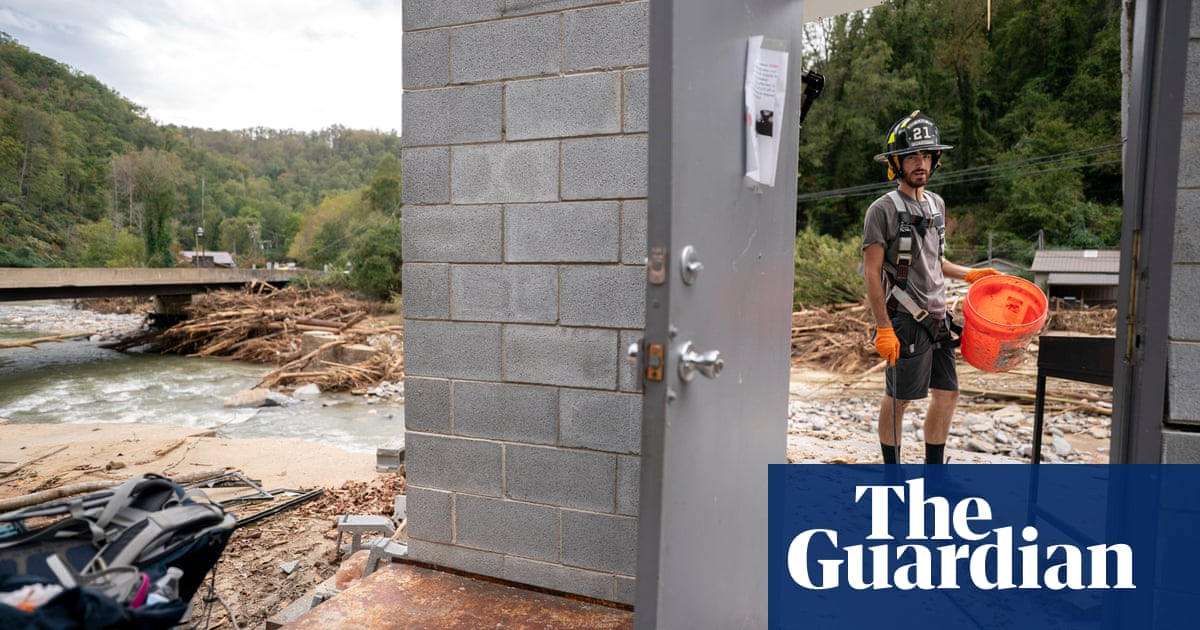Thousands gathered for New York City’s annual Climate Week last week to promote climate solutions, from the phaseout of fossil-fuel subsidies to nuclear energy to corporate-led schemes like carbon credits. Others touted a more offbeat potential salve to the crisis: psychedelics.
Under the banner of Psychedelic Climate Week, a group of academics, marketers and advocates gathered for a film on pairing magic mushrooms with music, a discussion on funding ketamine-assisted therapy and a panel on “Balancing Investing & Impact with Climate & Psychedelic Capital”.
Many attendees shared the belief that psychedelic experiences may spark “consciousness shifts”, which can inspire climate-friendly behaviors, said Marissa Feinberg, the founder of Psychedelics for Climate Action, which convened the event series.
The promotion of psychedelics was one of several features of Climate Week that diverged from the usual lineup of platitude-heavy panel talks. Other events included a series of climate-themed discussions and a performance by a “drag wrestling collective” in a pop-up boxing ring, as well as events filled with dancing, meditation and imbibing cacao.
Such themes of wellness and personal improvement come amid growing public anxiety about the climate crisis, to the extent that many younger people do not see themselves having children, and frustration over the faltering progress to move away from fossil fuels.
There is a sense of anger among many people that “fossil-fuel companies are using the power of their wallet and their political reach to intimidate anyone who wants to move forward”, said Christiana Figueres, a Costa Rican diplomat who was previously the executive secretary of the UN framework convention on climate change.
“I don’t know about drugs, but many people in the climate and biodiversity community are certainly beyond despondent,” said Figueres. “When you feel angry and despondent, there’s a lot of energy there and you have to take that and turn it into agency for good.”
There is surging interest in the potential for hallucinogens – including psychedelics like LSD, empathogens like MDMA, and dissociatives like ketamine – to serve as healing aids for depression, addiction and other mental health problems.
Psychedelic drug use, under the right circumstances, can “relieve your personal stress” and promote “mindfulness”, said Feinberg in an interview from a midtown Manhattan coffee shop. Someone who is tense and seeking convenience might buy a plastic water bottle, but those who take psychedelics – and internalize the feeling of connectedness they inspire – may behave with more intention, she said.
“You take that moment of peace and calm, and you plan your day, and you bring that water bottle with you, and you have that more intentional start to your day,” she said. Gesturing toward her own cup of water, she said: “I opted for the paper cup.”
It’s not only consumers who can benefit from psychedelic experiences, said Feinberg. They may also help C-suite executives “think outside the box” when it comes to social issues and climate, she said. Amazon’s anti-worker policies and sky-high carbon emissions may be related to Jeff Bezos’s feelings of unworthiness, Feinberg suggested.
If Bezos experienced “healing”, he might shift from solely focusing on amassing wealth to incorporating compassion and sustainability, she argued. The same may be true of some politicians, she said, adding that one sponsor of Psychedelic Climate Week offered free treatments of ibogaine – a psychedelic and dissociative drug – to politicians out of a Cancún clinic.
Another one of Feinberg’s collaborators, the University of Maryland business school professor Bennet Zelner, is researching psychedelic experiences for organizational leaders, examining whether they spur more compassionate decision-making.
“His work is very compelling to our group,” said Feinberg, who is also the founder of a communications firm and does public relations for Nushama, a Manhattan clinic offering ketamine treatment for mental health.
Some research does suggest psychedelic experiences are associated with “pro-environmental” behavior or feeling “nature-connectedness”. But the evidence is limited, subjective and full of potentially confounding factors, said Nicolas Langlitz, a historian of science at the New School who studies psychedelics. A 2017 study found those who reported hallucinogen use were also more likely to report that they recycled and saved water, but its participants, who were recruited from Amazon’s crowdsourcing platform, were younger, more educated and more experienced with psychedelics than the average US citizen.
“Generally, the milieu around psychedelics – and especially the parts of that milieu that these studies tap into – just tends to be a lot more liberal, a lot more environmentally conscious,” said Langlitz.
Though research shows those who have partaken in Indigenous-led ayahuasca ceremonies in the Amazon rainforest feel more “nature-relatedness”, it does not interrogate the willingness of foreigners to take carbon-intensive flights to the rainforest from far-flung western countries.
Such studies also generally focus on individual changes in feelings and behavior amid a longstanding heated debate about whether such shifts translate into carbon reductions, and whether they should command environmentalists’ attention.
“I’m generally skeptical about any individualized solution,” said Langlitz. “I think, at the end of the day, it’s policy decisions that make a difference.”
Feinberg, for her part, said individual and system-wide solutions were both needed. “Systems are created … for individuals to participate in,” she said, adding that systems and individuals “inform each other”.
“We all have power. We all influence each other. Someone can only make a product that someone’s going to buy, and I’m only going to buy something that’s on the shelf,” she said. “So it all plays hand in hand.”
Other studies indicate a correlation between using the substances and pro-social behavior or anti-authoritarian sentiment. Yet counter-examples abound, said Langlitz. Neo-Nazi figures have said psychedelics have inspired them. Albert Hofmann, who invented LSD in 1938, was close friends with Ernst Jünger, who railed against democracy, and Armin Mohler, the far-right political philosopher, Langlitz said.
“Jünger and Hofmann tripped together,” said Langlitz. “There are pockets of psychedelic countercultures that are rightwing and authoritarian.”
Psychedelics have also gained prominence among business leaders. Elon Musk, SpaceX founder and Tesla CEO, has reportedly used ketamine both therapeutically and recreationally and has still been widely criticized for mistreating workers and mishandling hazardous products. (Feinberg declined to comment on Musk specifically, but said that “psychedelic healing does not happen overnight and it’s not at all a silver bullet”, and that “psychedelics do not work for everyone in a positive way”.)
In the absence of robust climate policy, however, interest in inward-focused climate action is likely to abound. Figueres said she had started to lead spiritual retreats in locations around the world to help people “turn inside and understand what is going on and how they can compost those feelings and emotions in order to strengthen their agency”.
“This is an issue very close to my heart,” she said.










